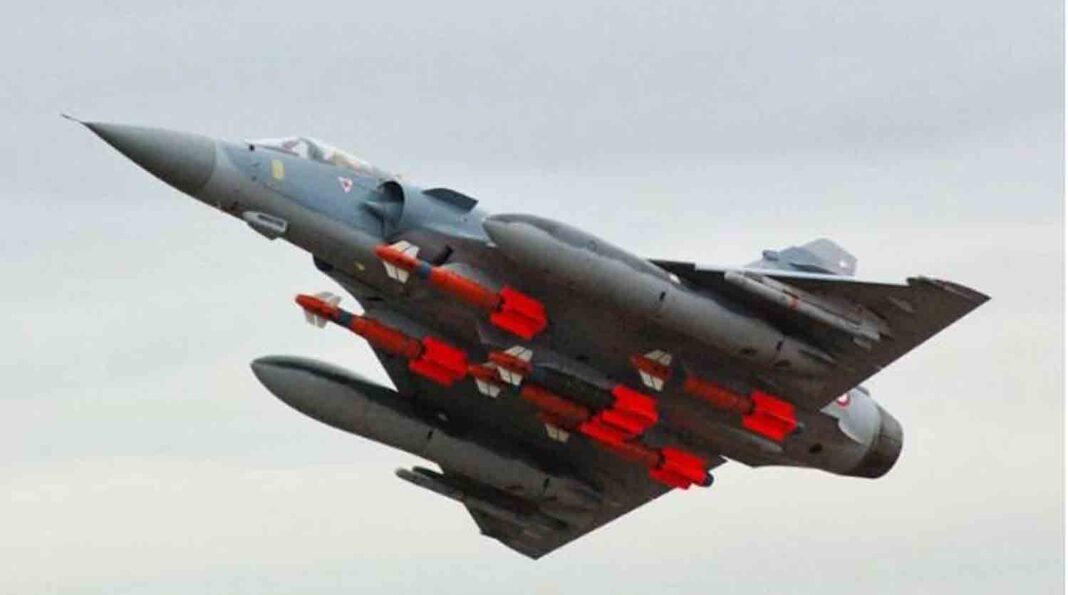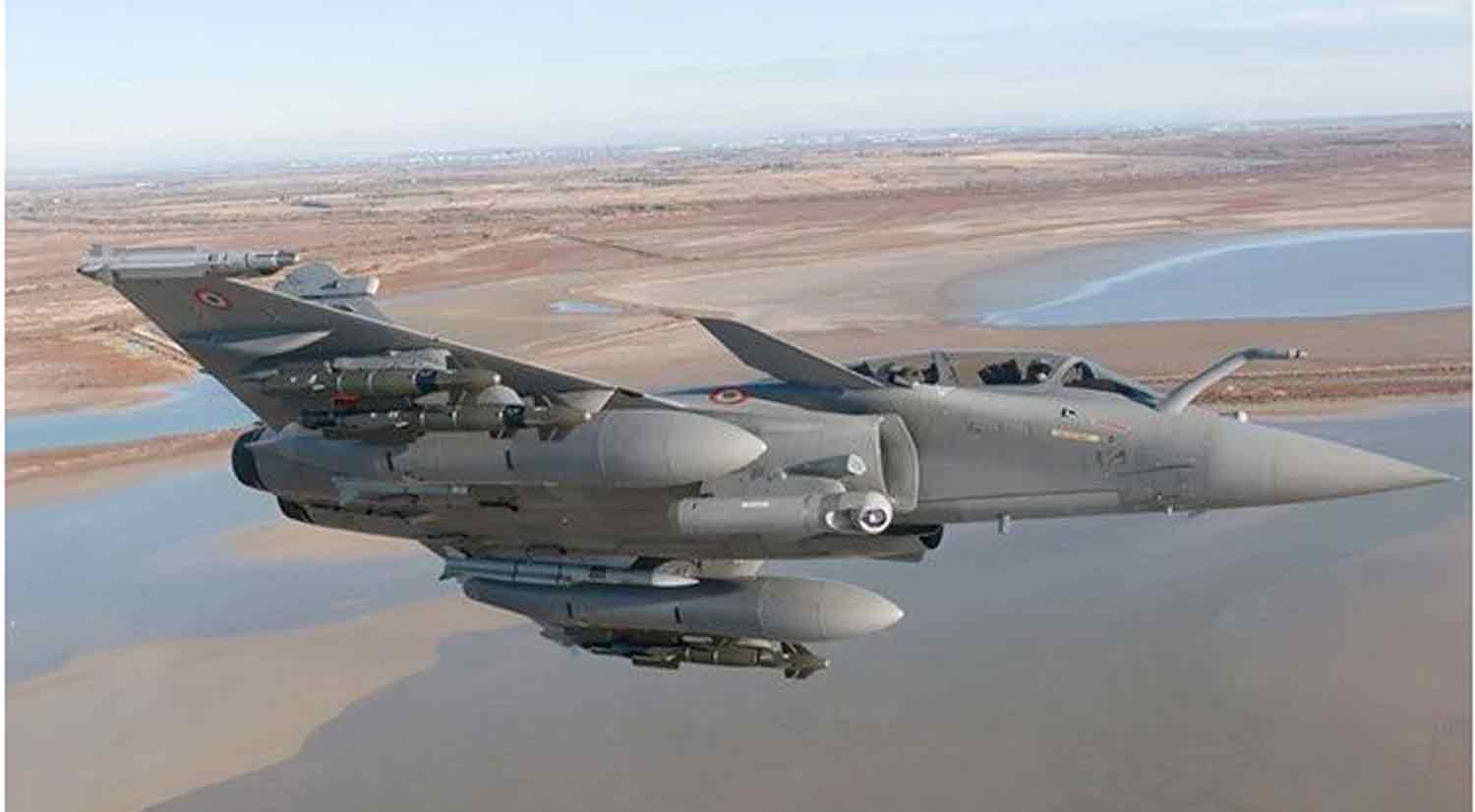On March 10, 2025, France announced that the Ukrainian Air Force’s Mirage 2000-5F fighter jets will be outfitted with AASM extended-range guided bombs, significantly enhancing Ukraine’s capacity for precision strikes in its ongoing conflict with Russia.
This development, reported by military observers, represents a notable advancement in France’s support for Ukraine, equipping the country with an additional platform capable of deploying sophisticated munitions.
This decision follows successful tests where a French Mirage 2000-5F showcased its ability to carry up to six AASM-250 bombs, indicating the increased firepower now accessible to Ukrainian pilots. It is part of a wider initiative by Western nations to strengthen Ukraine’s military capabilities in light of the ongoing war that began with Russia’s full-scale invasion in February 2022.
The incorporation of these bombs into Ukraine’s military arsenal prompts considerations regarding their tactical implications, the types of targets they may engage, and their influence on the shifting dynamics of the conflict.
By adding AASM bombs to the Mirage 2000-5F jets, Ukraine gains enhanced options for striking targets at extended ranges with greater precision. Military experts highlight that these munitions, developed by Safran Electronics & Defense, are engineered to convert standard unguided bombs into precision-guided ordnance.
With a range surpassing 70 kilometers when launched from elevated altitudes, the AASM enables pilots to target adversaries while remaining beyond the reach of numerous short- and medium-range air defense systems. This stand-off capability could be crucial for Ukrainian forces, who have encountered significant challenges from Russian air defenses and artillery along the front lines.
The Mirage 2000-5F, a multirole fighter aircraft developed by Dassault Aviation in the late 1990s, is designed to effectively conduct both air-to-air and air-to-ground operations, establishing it as a flexible platform for the deployment of various munitions.
From a tactical standpoint, the AASM’s extended range provides Ukraine with the capability to strike Russian military assets situated deeper within enemy territory. Analysts indicate that potential targets may encompass command centers, ammunition storage facilities, logistics hubs, and troop concentrations, all of which are vital to Russia’s military operations.
The precision guidance of these bombs—utilizing a combination of inertial navigation, GPS, and optional laser or infrared systems—allows for strikes with an accuracy reported to be within one meter under ideal conditions. This level of precision can minimize collateral damage compared to unguided munitions; however, its effectiveness is influenced by factors such as weather conditions, electronic countermeasures, and the quality of targeting information available to Ukrainian pilots.
“The capability to engage high-value targets from a distance alters the risk assessment for Russian forces,” noted Douglas Barrie, a senior fellow at the International Institute for Strategic Studies, in a recent evaluation of Western-supplied armaments.
Nonetheless, he warned that the limited number of Mirage jets—estimated to be between six and twelve based on French commitments—restricts their overall impact unless accompanied by a consistent supply of munitions and strong logistical support.
The ability of Russian defenses to intercept these bombs is a crucial factor to consider. Russia has sophisticated air defense systems, such as the S-400, which can engage targets at distances of up to 400 kilometers and is specifically designed to counter various aerial threats, including cruise missiles.
In contrast, the AASM is classified as a guided bomb rather than a conventional missile. It is deployed from an aircraft and utilizes a rocket motor located in its tail for propulsion. Its compact size and minimal radar signature make it less detectable than larger cruise missiles, such as the SCALP-EG, which France has also provided to Ukraine.
While Russian systems like the Pantsir-S1 are tailored for short-range threats and could be effective if positioned close to the target, the AASM’s standoff capability minimizes the chances of the launching aircraft entering the engagement zones of these systems. Additionally, although Russian electronic warfare capabilities could potentially interfere with GPS guidance, the bomb’s inertial navigation system serves as a backup, albeit with some loss of precision.
Experts are split on the AASM’s interceptability, with some arguing that its effectiveness will depend on Ukraine’s capacity to coordinate attacks and neutralize enemy defenses.
The AASM, or Armement Air-Sol Modulaire, has been integral to French military capabilities since its launch in 2007. It was designed as a cost-efficient alternative to high-priced standalone missiles, enhancing existing bombs—typically weighing 250, 500, or 1,000 kilograms—by incorporating a guidance kit and a range-extension module.
The standard variant, widely utilized by the French Air Force, employs a hybrid inertial GPS system for navigation. More sophisticated versions feature laser guidance for targeting moving objects or infrared imaging for precision in all weather conditions, although it is not yet confirmed which specific model Ukraine will receive.
The 250-kilogram variant, referred to as the AASM-250, is frequently associated with the Mirage 2000-5F, which has a payload capacity of around 6,300 kilograms distributed across nine hardpoints.
Safran, the manufacturer, has designed the AASM to be highly adaptable, enabling customization for various mission requirements. The tail kit is equipped with foldable winglets to improve maneuverability and includes a solid-fuel rocket motor that enhances the bomb’s range compared to conventional gravity bombs.
When deployed from lower altitudes, the range is considerably reduced; however, high-altitude launches—facilitated by the Mirage 2000-5F’s operational ceiling of 15,240 meters—optimize its distance capabilities. The development of this system commenced in the late 1990s, as France aimed to create a weapon that would fill the gap between unguided bombs and expensive cruise missiles.
Following a competitive selection process, Safran was awarded the contract in 2000, with the first units delivered to the French military seven years later. Since then, the AASM has been utilized in various conflicts, including those in Afghanistan, Libya, and Mali, achieving a notable reliability with a reported success rate of 99% in French operations.
The integration of the bomb with Ukraine’s Mirage jets builds on its previous deployment with other aircraft in the Ukrainian Air Force. Beginning in early 2024, AASM bombs have been launched from Soviet-era MiG-29 fighters, which have been modified to accommodate the French munitions. Images that emerged online in March 2024 provided the first visual evidence of this combination, following France’s commitment to supply 50 bombs monthly throughout the year.
The Mirage 2000-5F presents several advantages over the MiG-29, notably in its advanced avionics and increased payload capacity, which may allow for a greater number of bombs to be carried per mission. Its Thales RDY radar, capable of tracking multiple targets at a distance of 70 miles, significantly enhances situational awareness. Additionally, electronic warfare enhancements—specifically implemented for Ukraine—bolster the aircraft’s resilience against Russian jamming efforts.
In October 2024, French Defense Minister Sébastien Lecornu confirmed that modifications were made at Cazaux Air Base to equip the jets with air-to-ground capabilities, including compatibility with AASM and SCALP-EG missiles.
The Mirage 2000-5F’s testing with AASM bombs can be traced back to earlier demonstrations by the French Air Force, although detailed information about these trials is scarce in public sources. A notable instance, mentioned in posts on X on March 10, 2025, illustrated a French Mirage 2000-5F carrying up to six AASM-250 bombs, highlighting the aircraft’s capacity for substantial payloads.
These evaluations, conducted before the jets were transferred to Ukraine, were designed to confirm the successful integration of the munitions with the aircraft’s systems. The Mirage’s delta-wing configuration and SNECMA M53-P2 engine, which generates 21,384 pounds of thrust with afterburner, allow it to achieve speeds of Mach 2.2 while maintaining agility and the ability to carry heavy loads.
The AASM has proven its capability to engage targets at long distances during recent trials, a feature that is expected to enhance Ukrainian military operations. While the French military has not disclosed detailed results from these tests, the effective use of the AASM from Mirage 2000D aircraft in previous conflicts indicates a reliable performance history.
The transfer of Mirage 2000-5F jets to Ukraine commenced in February 2025, with the initial delivery of three aircraft following extensive pilot training conducted in France. French President Emmanuel Macron first announced this transfer in June 2024, committing to provide an unspecified number of jets along with training for 4,500 Ukrainian personnel.
By October, Minister Lecornu specified that six aircraft would be delivered, with the potential for additional units based on Ukraine’s requirements and France’s available inventory, which consists of approximately 26 active Mirage 2000-5F jets. The confirmation of AASM compatibility on March 10, 2025, supports Ukraine’s efforts to enhance interoperability with NATO-standard armaments, a trend also reflected in its acquisition of F-16 jets from the Netherlands and Denmark.
As the conflict evolves, the combination of Mirage aircraft and AASM munitions could alter the aerial dynamics, although their effectiveness will hinge on Ukraine’s capacity to shield the jets from Russian air defenses and ensure a consistent supply of munitions amid competing demands on Western resources.
Discover more from Defence Talks | Defense News Hub, Military Updates, Security Insights
Subscribe to get the latest posts sent to your email.





